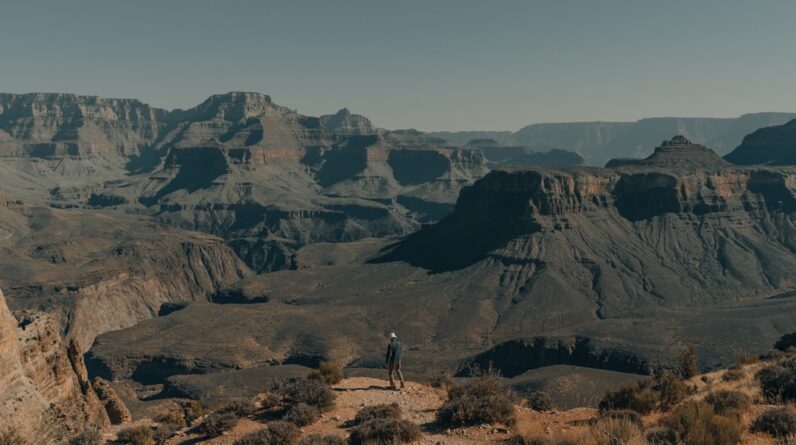Extreme weather conditions can be unpredictable and dangerous, making it crucial for individuals to be prepared. Whether it’s a heatwave, blizzard, thunderstorm, flood, tornado, hurricane, or extreme cold, having the necessary knowledge and supplies can mean the difference between life and death. In this article, we will explore the different types of extreme weather and provide tips on how to stay safe and prepared.
Key Takeaways
- Essential items for surviving extreme weather include a first aid kit, non-perishable food, and a flashlight.
- To stay cool and hydrated during a heat wave, drink plenty of water and avoid strenuous activity during the hottest parts of the day.
- When facing snowy conditions, dress in layers and avoid overexertion to prevent hypothermia.
- To avoid dangerous situations during thunderstorms and lightning, stay indoors and avoid using electronics or plumbing.
- During floods and flash floods, avoid driving through standing water and seek higher ground if necessary.
Preparing for the Worst: Essential Items for Surviving Extreme Weather
When it comes to extreme weather, having a well-stocked survival kit is essential. Some items to include in your kit are:
1. Water: It is crucial to have an adequate supply of clean drinking water. The general rule of thumb is to have at least one gallon per person per day.
2. Non-perishable food: Stock up on canned goods, energy bars, and other non-perishable food items that can sustain you for several days.
3. First aid kit: Make sure your first aid kit is well-stocked with bandages, antiseptic ointment, pain relievers, and any necessary prescription medications.
4. Flashlights and batteries: In case of power outages, having a reliable source of light is crucial. Make sure to have extra batteries on hand as well.
5. Blankets and warm clothing: If you live in an area prone to extreme cold or blizzards, having extra blankets and warm clothing is essential for staying warm.
In addition to having a survival kit, it is also important to have a plan in place. This includes knowing where your nearest shelter is located, having a designated meeting place for your family in case you get separated, and knowing how to contact emergency services.
Heat Waves: How to Stay Cool and Hydrated in Scorching Temperatures
Heatwaves can be extremely dangerous, especially for vulnerable populations such as the elderly and young children. Here are some tips for staying cool and hydrated during scorching temperatures:
1. Stay indoors: During peak heat hours, it is best to stay indoors in an air-conditioned environment. If you don’t have air conditioning, consider going to a public place that does, such as a library or shopping mall.
2. Hydrate: Drink plenty of water throughout the day, even if you don’t feel thirsty. Avoid alcoholic and caffeinated beverages, as they can dehydrate you.
3. Dress appropriately: Wear loose-fitting, lightweight clothing that allows your skin to breathe. Opt for light colors that reflect sunlight rather than absorbing it.
4. Use fans and cold compresses: If you don’t have access to air conditioning, use fans and cold compresses to cool down. Place a damp cloth on your forehead or take a cool shower to lower your body temperature.
Blizzard Survival: Tips for Staying Warm and Safe in Snowy Conditions
| Topic | Metric |
|---|---|
| Temperature | Below freezing point |
| Wind Chill | Can make it feel much colder |
| Shelter | Build a snow cave or find natural shelter |
| Water | Melt snow or ice for drinking water |
| Food | High-energy snacks and meals |
| Clothing | Layer up with moisture-wicking and insulated clothing |
| Equipment | Bring a shovel, fire starter, and emergency blanket |
| Communication | Carry a charged cell phone or radio for emergencies |
Blizzards can bring heavy snowfall, strong winds, and freezing temperatures. Here are some tips for staying warm and safe during snowy conditions:
1. Stay indoors: If possible, stay indoors until the blizzard passes. If you must go outside, dress in layers and cover exposed skin to prevent frostbite.
2. Keep your home warm: Make sure your home is properly insulated and has a backup heating source in case of power outages. Use space heaters safely and keep flammable materials away from them.
3. Stock up on supplies: Before a blizzard hits, make sure you have enough food, water, and other essential supplies to last several days. Have extra blankets and warm clothing on hand as well.
4. Avoid unnecessary travel: If road conditions are hazardous, it is best to avoid unnecessary travel. If you must drive, make sure your vehicle is equipped with snow tires or chains and carry a winter emergency kit in your car.
Thunderstorms and Lightning: How to Avoid Dangerous Situations
Thunderstorms can bring heavy rain, strong winds, and lightning strikes. Here are some tips for staying safe during thunderstorms:
1. Seek shelter: When a thunderstorm approaches, seek shelter indoors or in a sturdy building. Avoid open areas, tall objects, and bodies of water.
2. Stay away from windows: Lightning can travel through windows, so it is best to stay away from them during a thunderstorm.
3. Unplug electronics: To protect your electronics from power surges caused by lightning strikes, unplug them before the storm arrives.
4. Wait for the storm to pass: Even after the rain stops, wait at least 30 minutes before going outside to ensure there is no immediate danger from lightning strikes.
Floods and Flash Floods: How to Stay Safe and Avoid Risks

Floods and flash floods can occur suddenly and cause significant damage. Here are some tips for staying safe during these events:
1. Move to higher ground: If you live in a flood-prone area, it is important to move to higher ground as soon as possible. Avoid walking or driving through flooded areas, as the water may be deeper than it appears.
2. Stay informed: Listen to local news or weather updates for information on flood warnings and evacuation orders. Follow the instructions of local authorities and evacuate if necessary.
3. Have an emergency kit ready: In case of a flood, have an emergency kit ready with essential supplies such as food, water, medications, and a battery-powered radio.
4. Secure your home: If you have time before a flood hits, secure your home by moving valuables to higher ground and placing sandbags around doors and windows to prevent water from entering.
Tornadoes and Hurricanes: How to Prepare and Stay Safe During a Storm
Tornadoes and hurricanes can cause widespread destruction and pose a significant threat to life and property. Here are some tips for preparing and staying safe during these storms:
1. Have a safe room or shelter: If you live in an area prone to tornadoes or hurricanes, it is important to have a designated safe room or shelter where you can take cover during a storm. This could be a basement, storm cellar, or an interior room on the lowest level of your home.
2. Secure outdoor items: Before a storm hits, secure outdoor furniture, grills, and other items that could become projectiles in high winds.
3. Listen to weather alerts: Stay informed about weather updates by listening to local news or using a weather radio. Follow the instructions of local authorities and evacuate if necessary.
4. Have an emergency plan: Create an emergency plan with your family that includes a designated meeting place, contact information for emergency services, and a communication plan in case you get separated.
Surviving in the Wilderness: Essential Skills for Extreme Weather Conditions
If you find yourself in the wilderness during extreme weather conditions, it is important to have basic survival skills. Here are some tips for surviving in the wilderness:
1. Find or build shelter: Seek shelter from the elements by finding natural cover such as caves or overhanging rocks. If necessary, build a shelter using branches, leaves, or other materials.
2. Start a fire: Fire provides warmth, light, and can be used for cooking. Learn how to start a fire using natural materials such as dry leaves, twigs, and rocks.
3. Find water: Look for natural sources of water such as rivers, streams, or lakes. If necessary, collect rainwater or melt snow for drinking.
4. Signal for help: If you are lost or injured, use signaling devices such as a whistle or mirror to attract attention. Build a signal fire using green vegetation or brightly colored materials.
Extreme Cold: How to Protect Yourself from Hypothermia and Frostbite
Extreme cold temperatures can be life-threatening if proper precautions are not taken. Here are some tips for staying warm and dry in extreme cold:
1. Layer clothing: Dress in layers to trap heat and insulate your body. Start with a base layer of moisture-wicking fabric, add a middle layer for insulation, and finish with an outer layer that is windproof and waterproof.
2. Cover exposed skin: Protect your extremities by wearing a hat, gloves, and warm socks. Use a scarf or face mask to cover your nose and mouth to prevent frostbite.
3. Avoid sweating: Avoid sweating by adjusting your clothing layers as needed. Sweating can make you feel colder once you stop moving.
4. Stay dry: Moisture can quickly lead to hypothermia in cold temperatures. Make sure your clothing and footwear are waterproof, and change into dry clothes if they become wet.
Surviving a Heatwave: Tips for Staying Cool and Hydrated in Hot Weather
In addition to the tips mentioned earlier for staying cool and hydrated during a heatwave, here are some additional tips:
1. Stay in air-conditioned spaces: If you don’t have air conditioning at home, consider going to public places such as libraries, shopping malls, or community centers that have air conditioning.
2. Use cooling techniques: Take cool showers or baths, use wet towels or ice packs on your body, or sit in front of a fan to help lower your body temperature.
3. Limit physical activity: During extreme heat, it is best to limit physical activity, especially during the hottest parts of the day. If you must exercise, do so in the early morning or evening when temperatures are cooler.
4. Monitor for signs of heat exhaustion or heat stroke: Symptoms of heat exhaustion include heavy sweating, weakness, dizziness, nausea, and headache. If left untreated, heat exhaustion can progress to heat stroke, which is a medical emergency. Seek medical attention immediately if you or someone else is experiencing symptoms of heat stroke.
Emergency Planning: How to Stay Safe and Prepared for Any Weather Event
Having an emergency plan in place is crucial for staying safe and prepared for any weather event. Here are some tips for creating an emergency plan:
1. Create an emergency kit: As mentioned earlier, have a well-stocked emergency kit with essential supplies such as food, water, medications, and a battery-powered radio.
2. Know your evacuation routes: Familiarize yourself with the evacuation routes in your area and have a plan for where you will go if you need to evacuate.
3. Stay informed: Sign up for local weather alerts and stay informed about any potential weather threats in your area. Have a battery-powered radio or a smartphone with a backup power source to receive updates.
4. Communicate with family and friends: Have a communication plan in place with your family and friends in case you get separated during an emergency. Designate a point person who can relay information to others.
Being prepared for extreme weather conditions is essential for staying safe and protecting yourself and your loved ones. By having the necessary supplies, knowledge, and skills, you can increase your chances of surviving and minimizing the impact of extreme weather events. Take action today to create an emergency plan, gather essential supplies, and stay informed about potential weather threats in your area. Remember, being prepared can make all the difference when it comes to extreme weather.
If you’re interested in weather and its impact on our health, you might also want to check out this article on strategies to strengthen bones and prevent osteoporosis. Maintaining strong bones is crucial for overall well-being, and understanding how weather conditions can affect bone health is essential. This article provides valuable insights and practical tips to help you build strong bones regardless of the weather. Read more
FAQs
What is weather?
Weather refers to the atmospheric conditions that occur in a particular place at a particular time. It includes temperature, humidity, precipitation, wind, and other factors.
What causes weather?
Weather is caused by the interaction between the sun’s energy and the Earth’s atmosphere. The sun’s energy heats the Earth’s surface, causing air to rise and creating areas of high and low pressure. This leads to the movement of air, which causes weather patterns.
What are the different types of weather?
There are many different types of weather, including sunny, cloudy, rainy, snowy, windy, and stormy. Weather can also be described as hot, cold, humid, dry, or wet.
How is weather measured?
Weather is measured using a variety of instruments, including thermometers to measure temperature, barometers to measure air pressure, hygrometers to measure humidity, and anemometers to measure wind speed. Weather satellites and radar are also used to track weather patterns.
Why is it important to understand weather?
Understanding weather is important for many reasons, including predicting and preparing for severe weather events such as hurricanes, tornadoes, and blizzards. It also helps us plan outdoor activities and make decisions about what to wear and how to travel. Additionally, weather patterns can have a significant impact on agriculture, transportation, and other industries.








